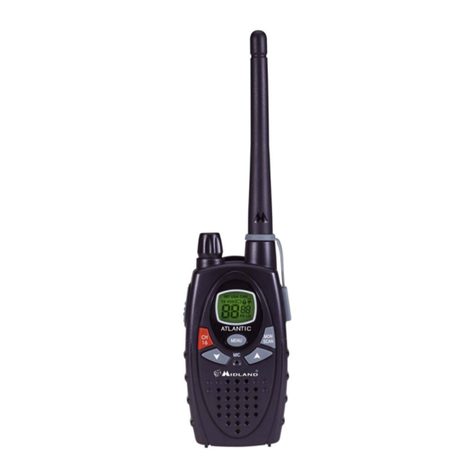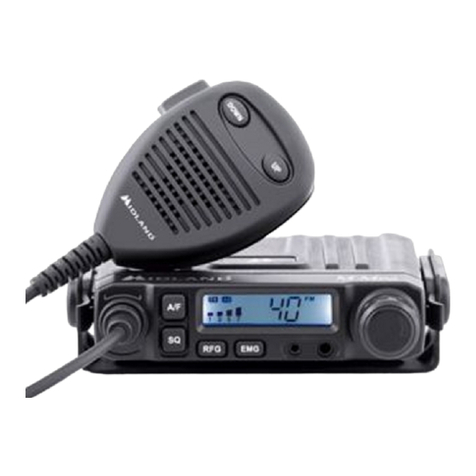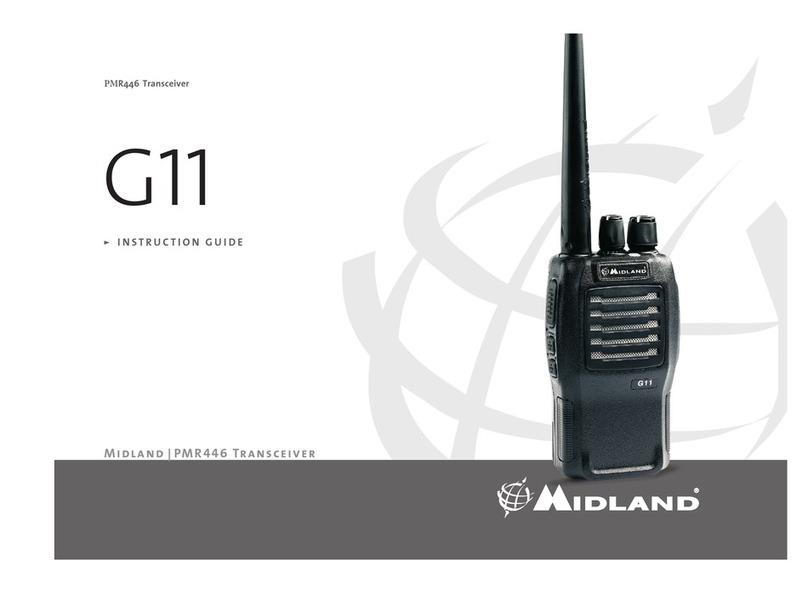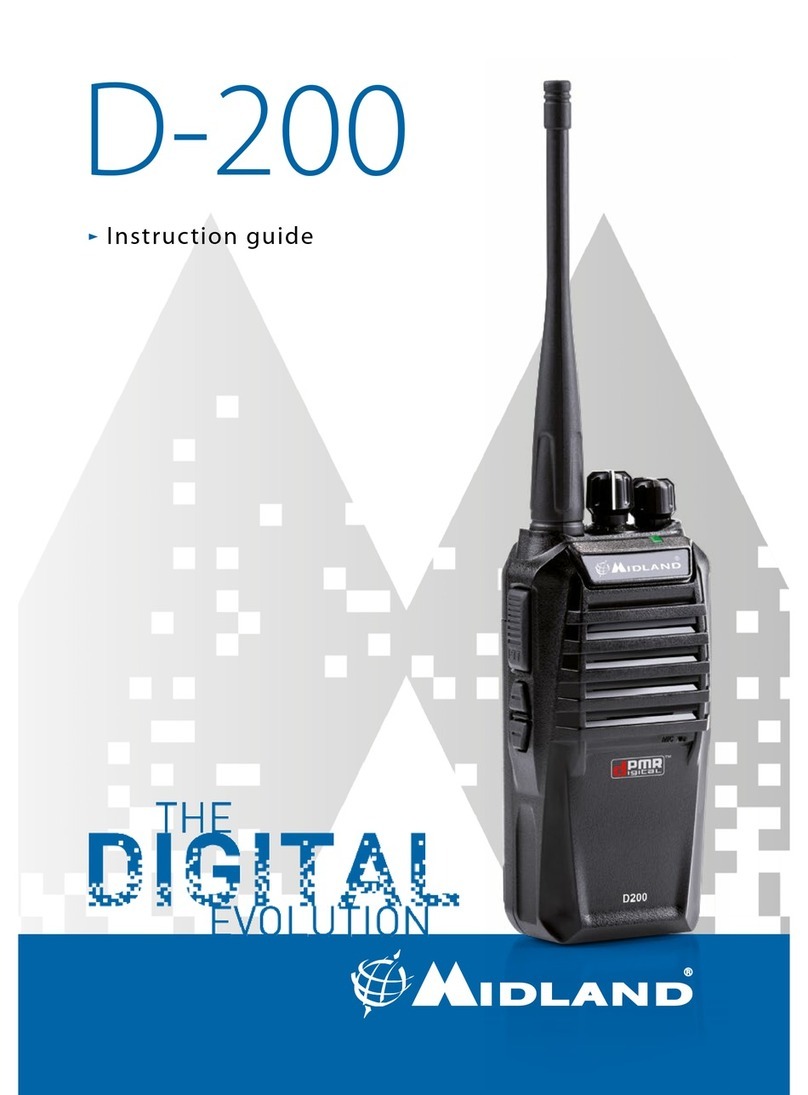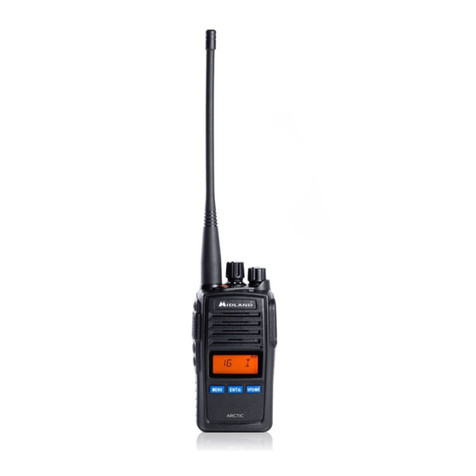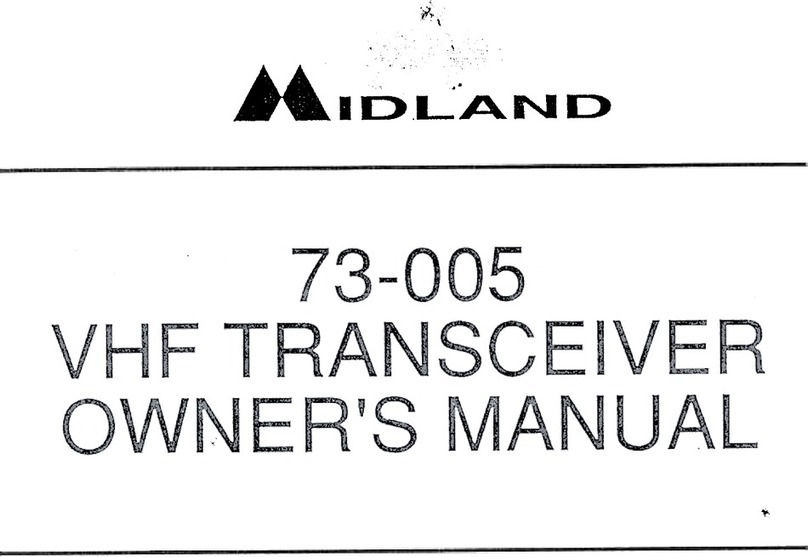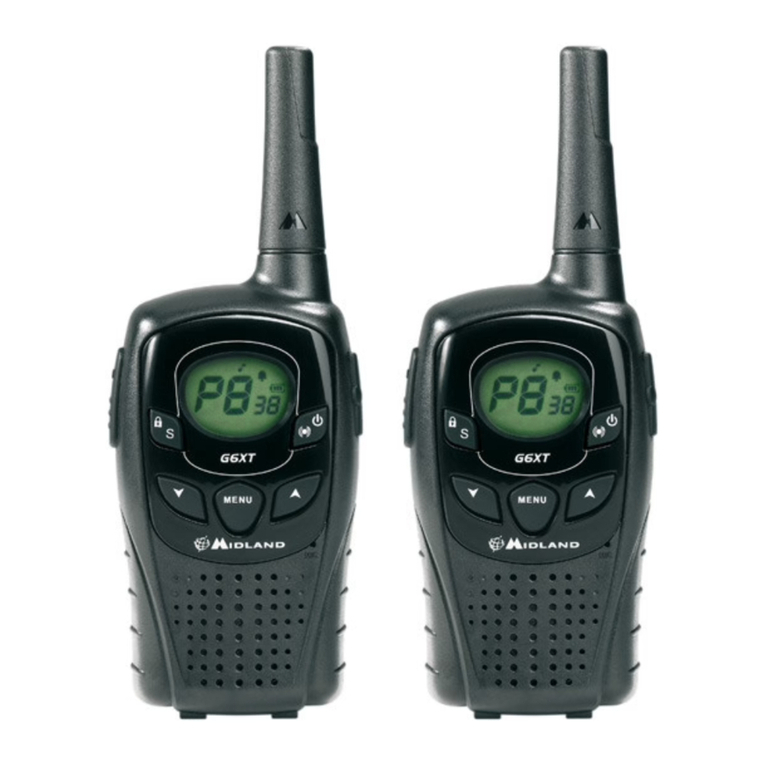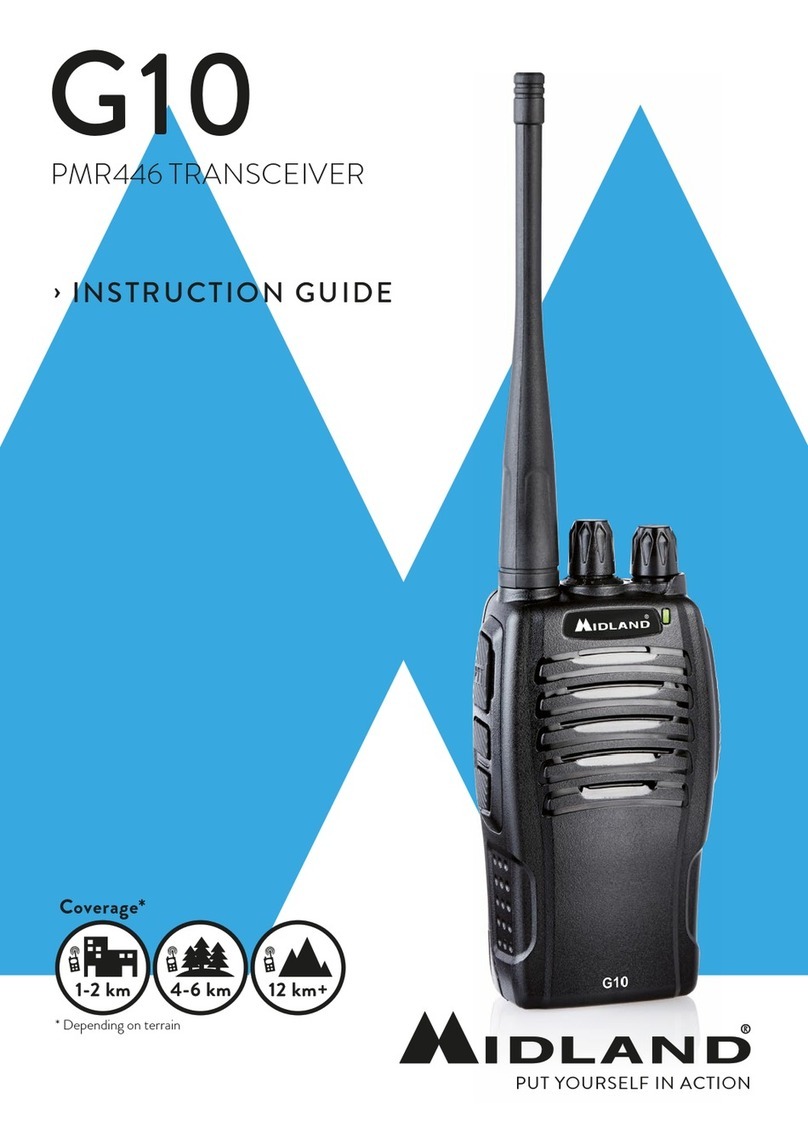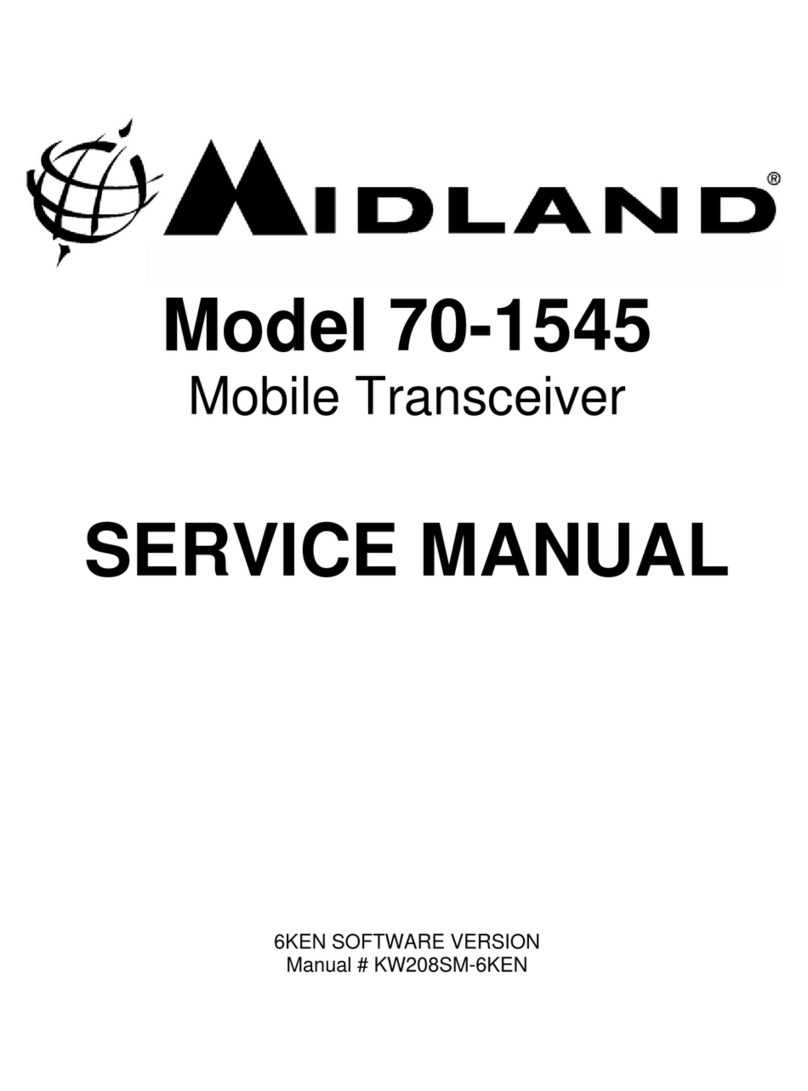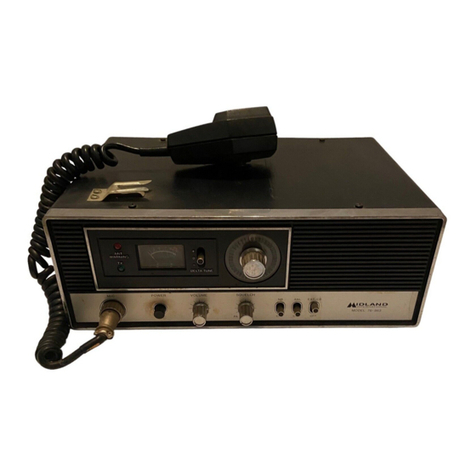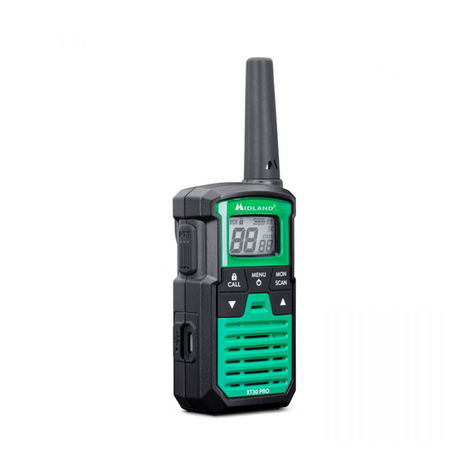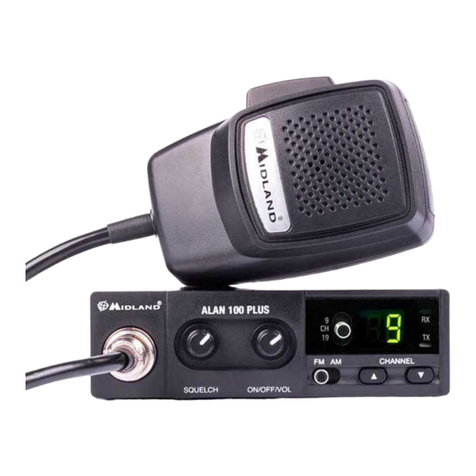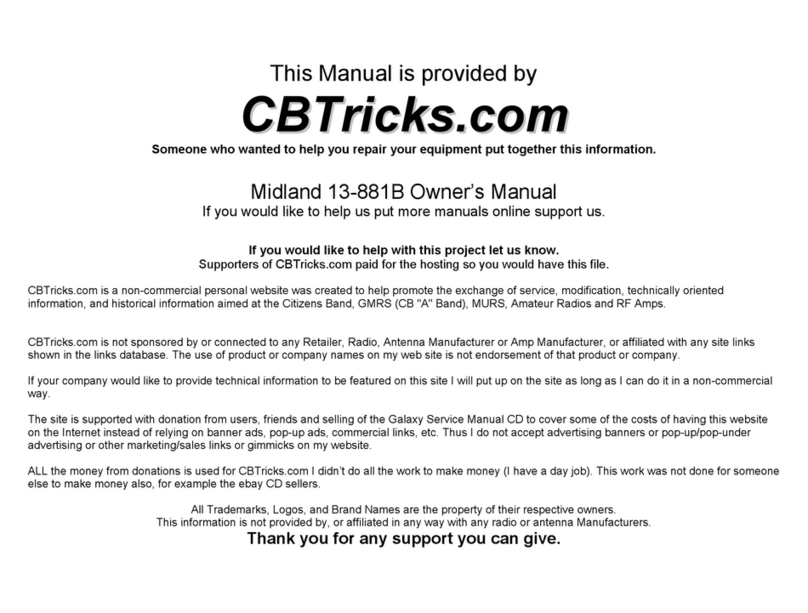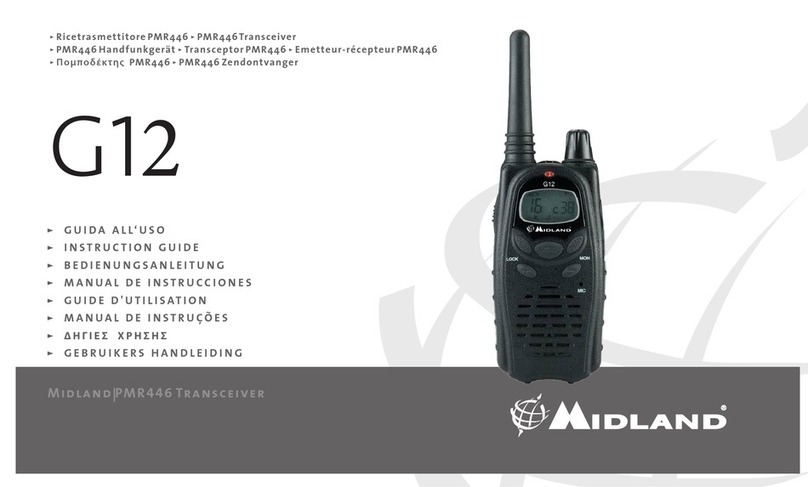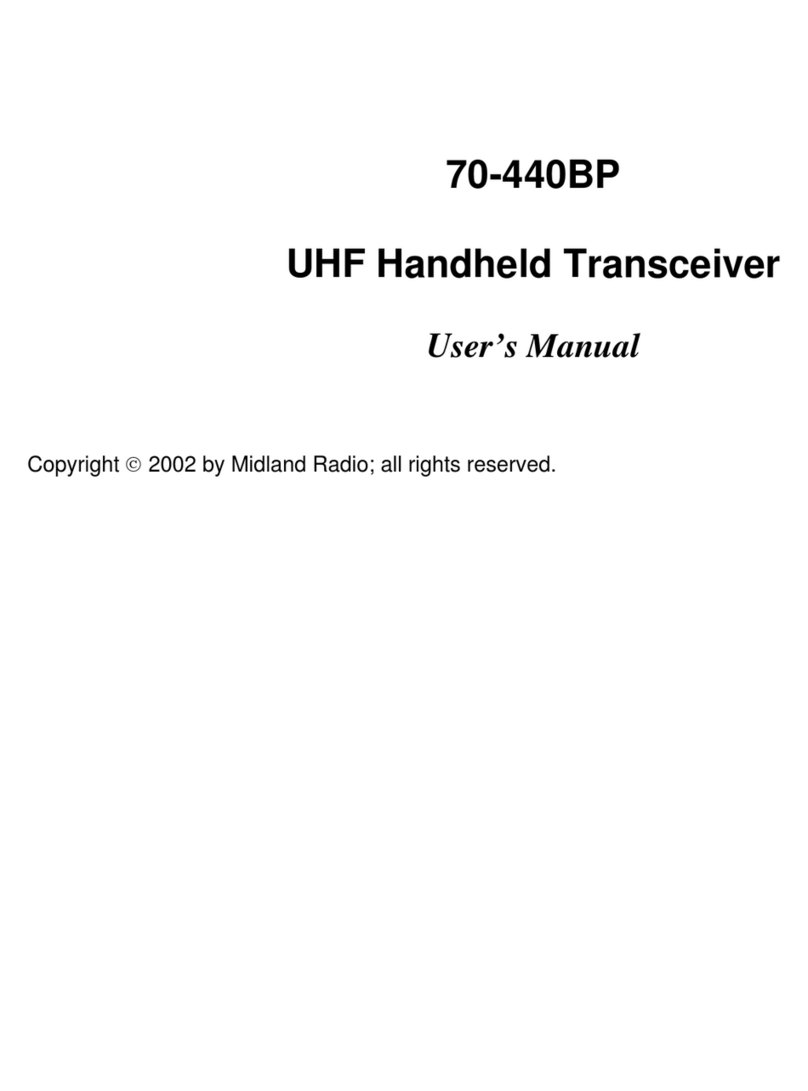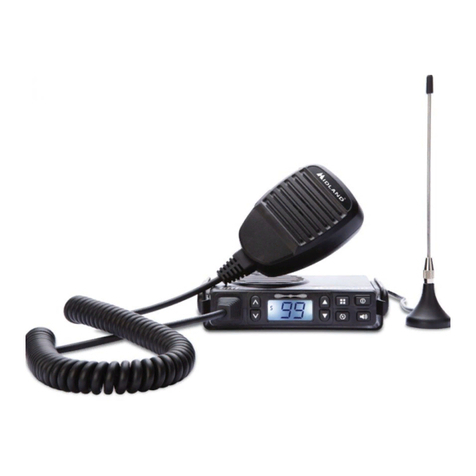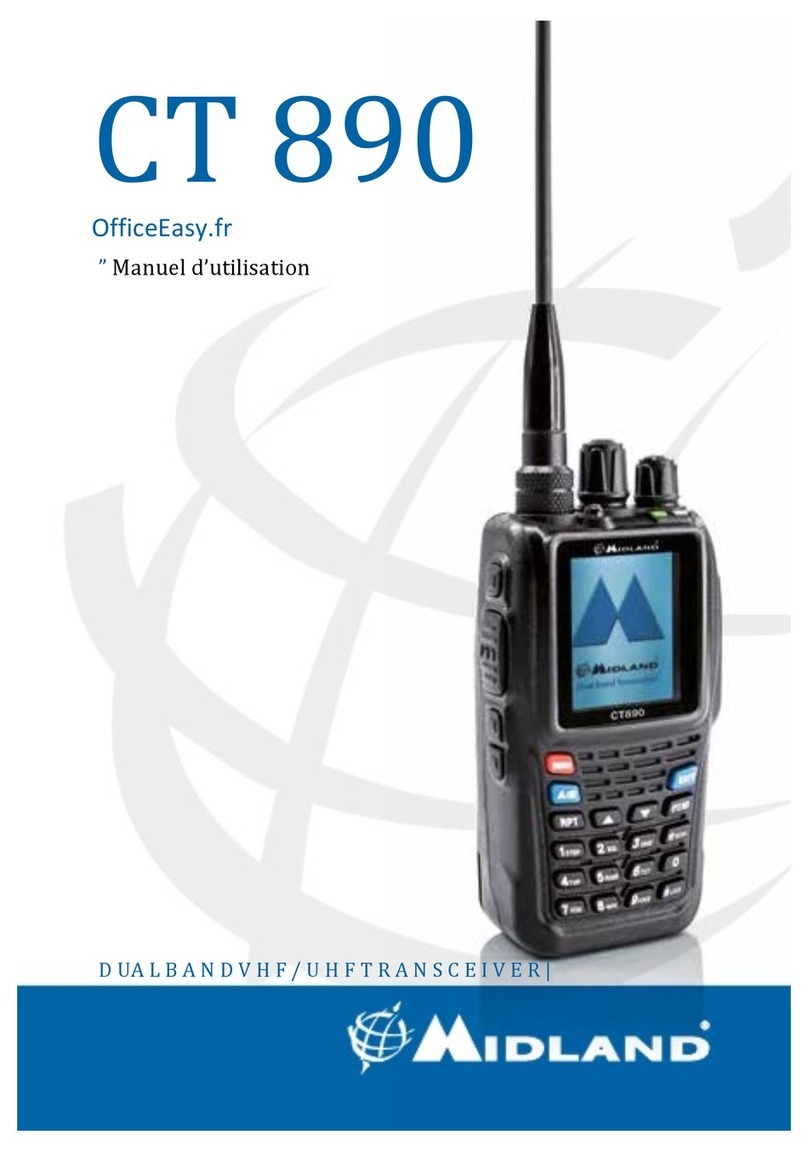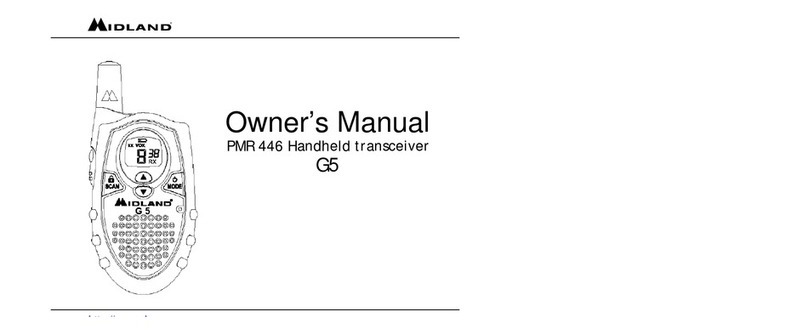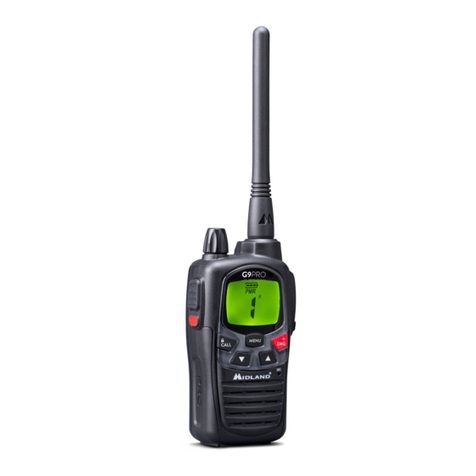
8 | Alan 199 Manuale d’uso Alan 199 Manuale d’uso | 9
CANALI PRIORITARI (CH 9-19)
L’Alan 199 è dotato di un commutatore che permette di posizionarsi im-
mediatamente sui canali 9 e 19. Il canale 9 serve solo per le comunicazio-
ni di emergenza. Il canale 19 invece è usato per richiedere informazioni
sulla viabilità, ecc.
Posizionando l’interruttore nella posizione centrale si ritornerà all’ultimo
canale selezionato.
ALTOPARLANTE SUPPLEMENTARE
Inserire un altoparlante con potenza da 3-10 W nella presa EXT-SPKR. In
questo modo l’altoparlante interno viene disconnesso.
USO DEL RICETRASMETTITORE
Ricezione
1. Assicurarsi che il filo rosso sia connesso ad una tensione di 12,6V ±
10%.
2. Controllare che l’antenna e il microfono siano ben connessi.
3. Posizionare il commutatore d’emergenza sulla posizione centrale.
4. Scegliere la potenza di emissione con la quale si intende operare.
5. Girare la manopola squelch nella massima posizione antioraria.
6. Accendere l’apparato mediante la manopola VOLUME.
7. Ricercare il canale desiderato attraverso i tasti CHANNEL.
8. Regolare il volume come desiderato.
9. Regolare lo squelch. Questo comando viene utilizzato per eliminare
il rumore di fondo del ricevitore in assenza di segnali d’ingresso. Per
la massima sensibilità del ricevitore è preferibile che il comando sia
regolato solo al preciso livello dove il rumore di fondo del ricevitore
o il rumore ambientale, viene eliminato. Girare completamente in
senso antiorario poi lentamente in senso orario finché non scom-
parirà il rumore. Qualsiasi segnale affinché possa venir ricevuto, do-
vrà essere leggermente più intenso rispetto alla media del rumore
ricevuto. Un’ulteriore rotazione in senso orario aumenterà il livello
di soglia che il segnale dovrà superare per poter essere udito. Se lo
squelch sarà posizionato nella massima posizione in senso orario, si
potranno sentire solo segnali molto forti.
Trasmissione
1. Selezionare il canale desiderato.
2. Premere il pulsante di trasmissione sul microfono, parlare mante-
nendo una distanza dalle labbra dai 5 a 8 cm.
3. Per ricevere, rilasciare il pulsante di trasmissione.
N.B.: gridare nel microfono non aumenta la portata della trasmissione, in
quanto un circuito interno automaticamente commuta la massima mo-
dulazione. Si consiglia quindi di usare un tono di voce normale.
